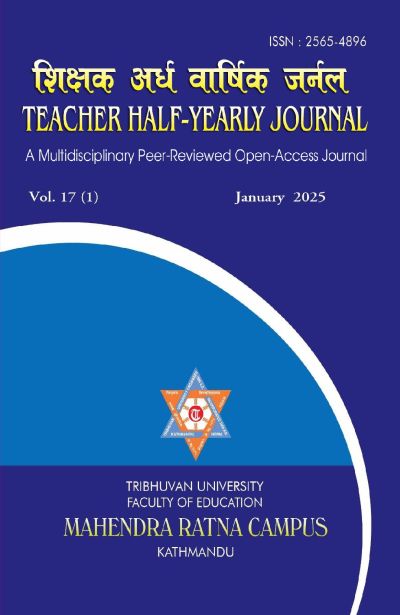Influences of Teachers’ Accountability on Students’ Mathematics Performance
DOI:
https://doi.org/10.3126/thj.v17i1.77907Keywords:
Accountability of teachers, students' performance, quantitative research design, one sample t- test, mathematicsAbstract
This research attempts to explore how students' mathematics performance is affected by teachers' accountability. We considered the population as the math teachers in all community secondary schools located in Kathmandu district. By using random sampling, we chose a sample of 71 secondary math teachers. Value-free axiology, objectivist epistemology, post positivist ontology, and quantitative research design were used. In this study, reliability and validity of the questionnaires determined by using the Cronbach's alpha and Delphi methods, respectively. In this study, 50 questionnaires in the form of five-point scales were used, but 9 questionnaires were excluded by rotation to prepare factors. The results of this study showed that a variety of factors, including teachers' professionalism and subject-matter expertise, students' regular learning, the equity and fairness of the assessment process, community trust, and efforts to enhance teaching contributed to the students' performance in mathematics. Further, teachers' accountability strategies have been found to be influenced by methods, organizational background, and cooperation. A supportive, professional development environment and accountability were stood crucial to create a positive learning environment which raised students’ performance.




